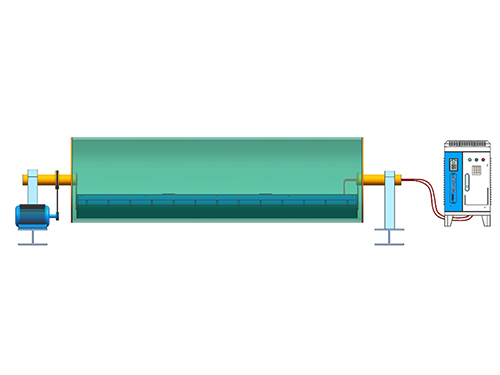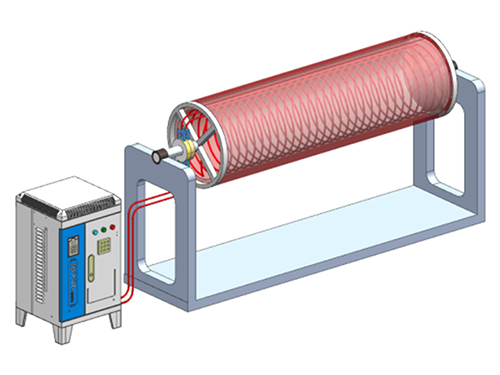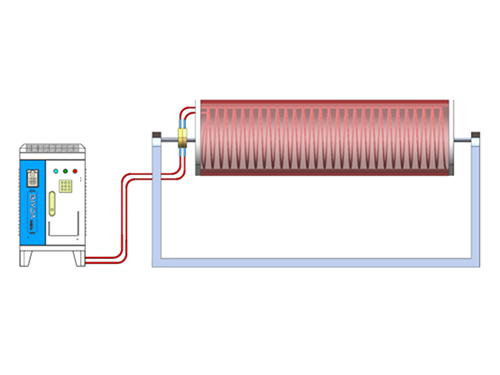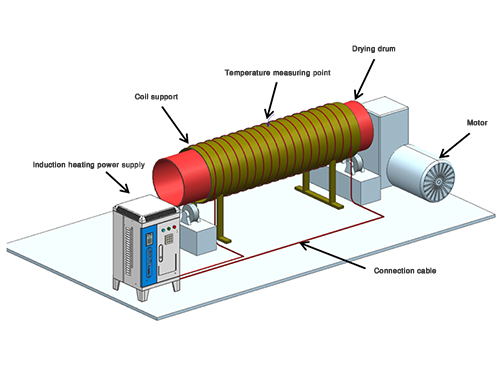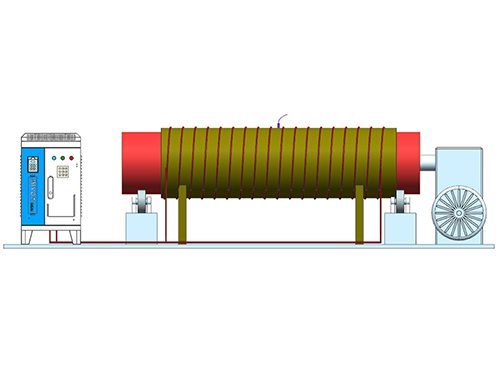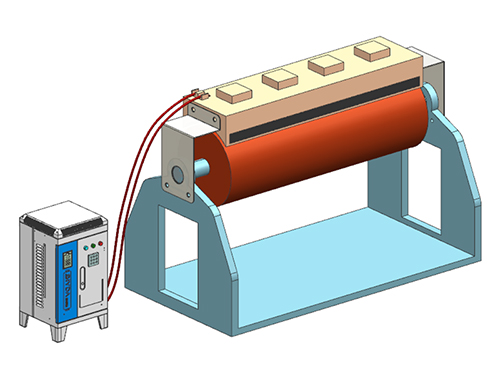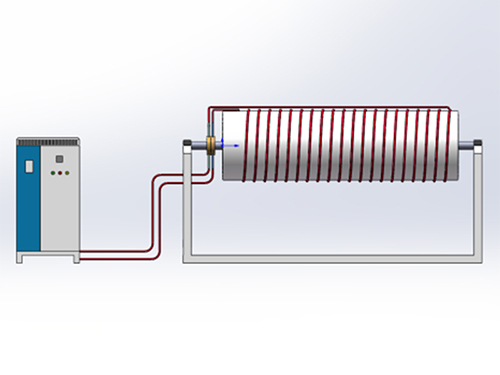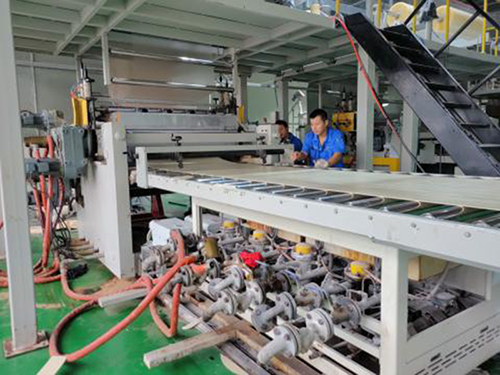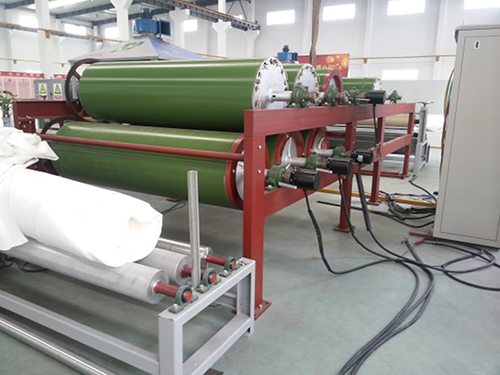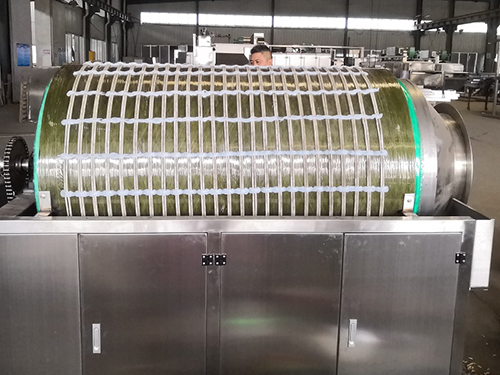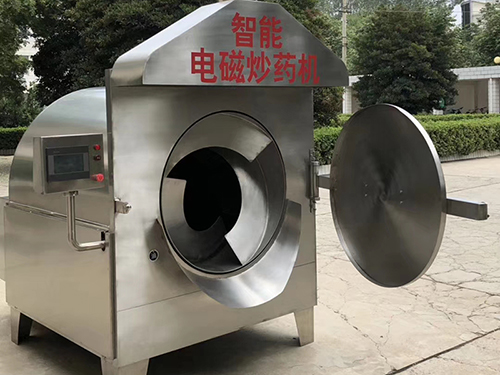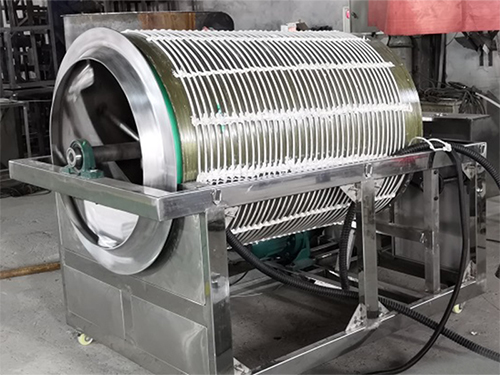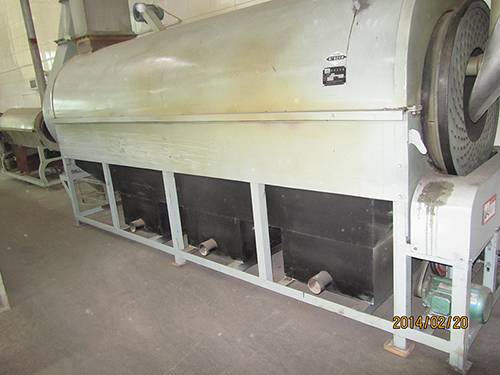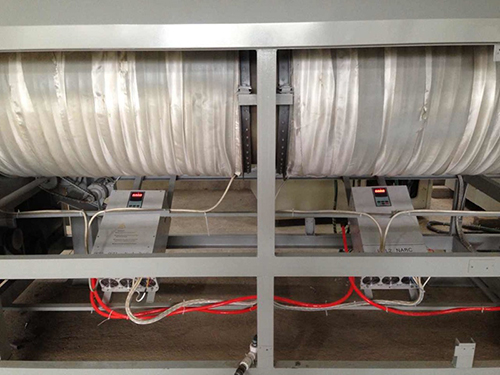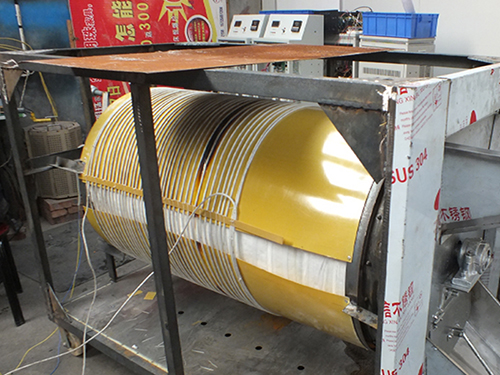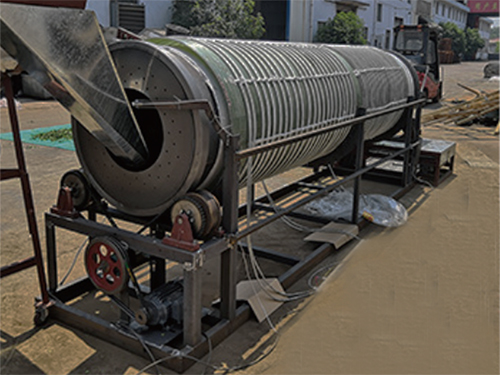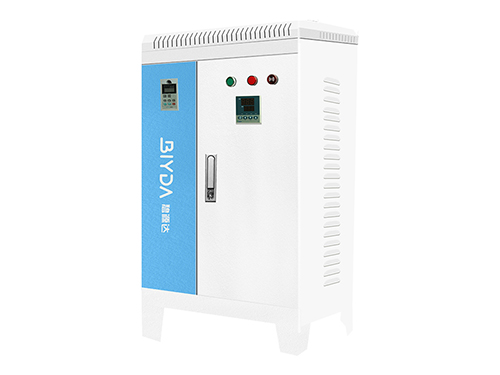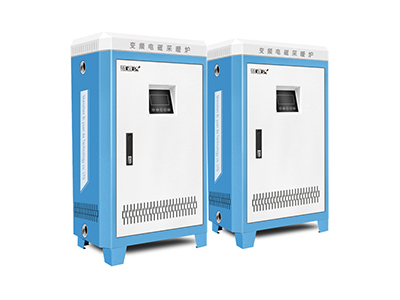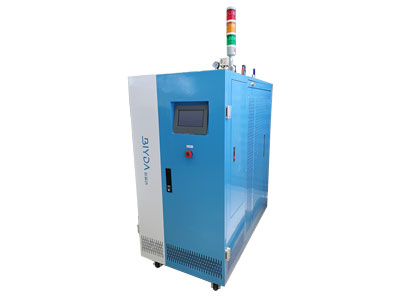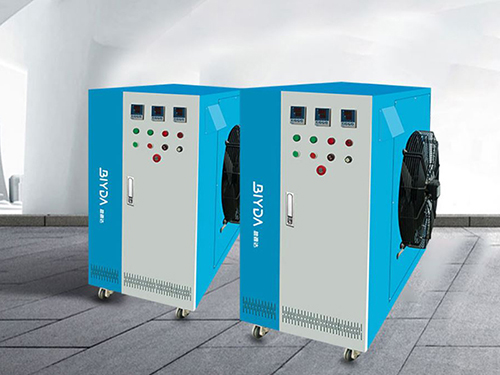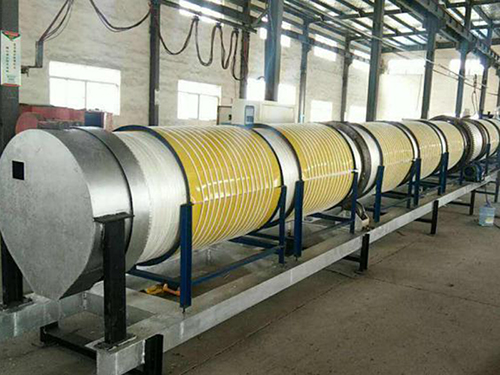
In the fields of food, pharmaceutical processing and paper converting, traditional rotary drum drying machines adopts heating methods of heating elements, gas, fuel, steam and thermal oil, all these heating methods use the principle of temperature difference to accomplish the heat transfer. One of the most disadvantages of these traditional heating methods is that a large amount of heat is transferred to the surroundings and neighboring objects where heat is not required, resulting lower heat utilization and heating efficiency. Induction heating is an ideal alternative to traditional heating methods, since the heat is directly generated within the cylindrical metal part itself.
- Heat is generated directly inside the workpiece, reducing the heat loss while increasing energy efficiency;
- High power density enables the heating speed faster;
- No open flame and heating medium required, providing safer and cleaner workplace;
- Digital control system ensures accurate temperature control, offering an intelligent operation;
- Compact structure and easy maintenance;
Compared to traditional resistance heating or gas-fired heating, induction heating can shorten the heating time by more than 50%, and the energy efficiency is more than 30%. Besides, induction heating will not produce any smoke and emissions, solving the concerns of environmental issues.
Induction heating coils are produced in accordance with the size of drying drum, and placed inside the drum. When the rotary drum dryer is rotating, the induction heating coil remains stationary. The induction heating system runs to heat inner temperature of the drying drum.
Induction Heating with Multi-Turn Helical Internal CoilInduction heating coils are wound inside the drying drum, the multi-turn helical wound coils and drying drum are rotated simultaneously. The induction heating system runs to heat inner temperature of the drying drum.
Induction Heating with Stationary Multi-Turn Helical External CoilInduction heating coils are wound closely around the support, and there is certain spacing between the coil support and drying drum. When the drying drum is rotating, the induction heating coil remains stationary. The induction heating system runs to heat the drying drum in a rapid and efficient manner.
Induction Heating with Stationary External CoilInduction heating coils are curved external coils fixed on the support above the drying drum. When the drying drum is rotating, the induction heating coil remains stationary. The induction heating system runs to heat the drying drum in a rapid and efficient manner.
Induction Heating with Multi-Turn Helical External CoilInduction heating coils are wound around the insulation cotton which is wrapped around the drying drum. The multi-turn helical wound coils and drying drum are rotated simultaneously. The induction heating system runs to heat the drying drum in a rapid and efficient manner.
Take paper pulp rotary drum dryer as an example:
To produce 100kg paper each hour, paper moisture content 50%, heating time 120ºC;
100/0.5=200kg, that means to heat 100kg paper from room temperature to 120ºC and 100kg moisture needs to be evaporated, so that induction heating power calculation for rotary drum dryer needs to be divided into two steps.
Step 1: to calculate power used for heating 100kg paper from room temperature to 120ºC
Power calculation: specific heat capacity J/(kg*ºC)×temperature differenceºC×weight KG ÷ time S = power W
Paper specific heat capacity: 2100J/(kg*ºC)
Temperature difference: 120-20=100ºC (room temperature 20ºC)
Paper weight: 100kg
Time: 1 hour=3600 seconds
i.e. 2100J/(kg*ºC)×(120ºC-20ºC)×100kg÷3600s=5833W=6kW
Step 2: to calculate power used for evaporating 100kg moisture from paper
720kW is required for evaporation of 1ton moisture with an hour, i.e. 100kg moisture requires 72kW
The theoretical power is 72+6kW, but load rate has to be considered for calculating the actual power. In general, load rate is calculated by 60%.
So the actual power is (72+6)/0.6=130kW


